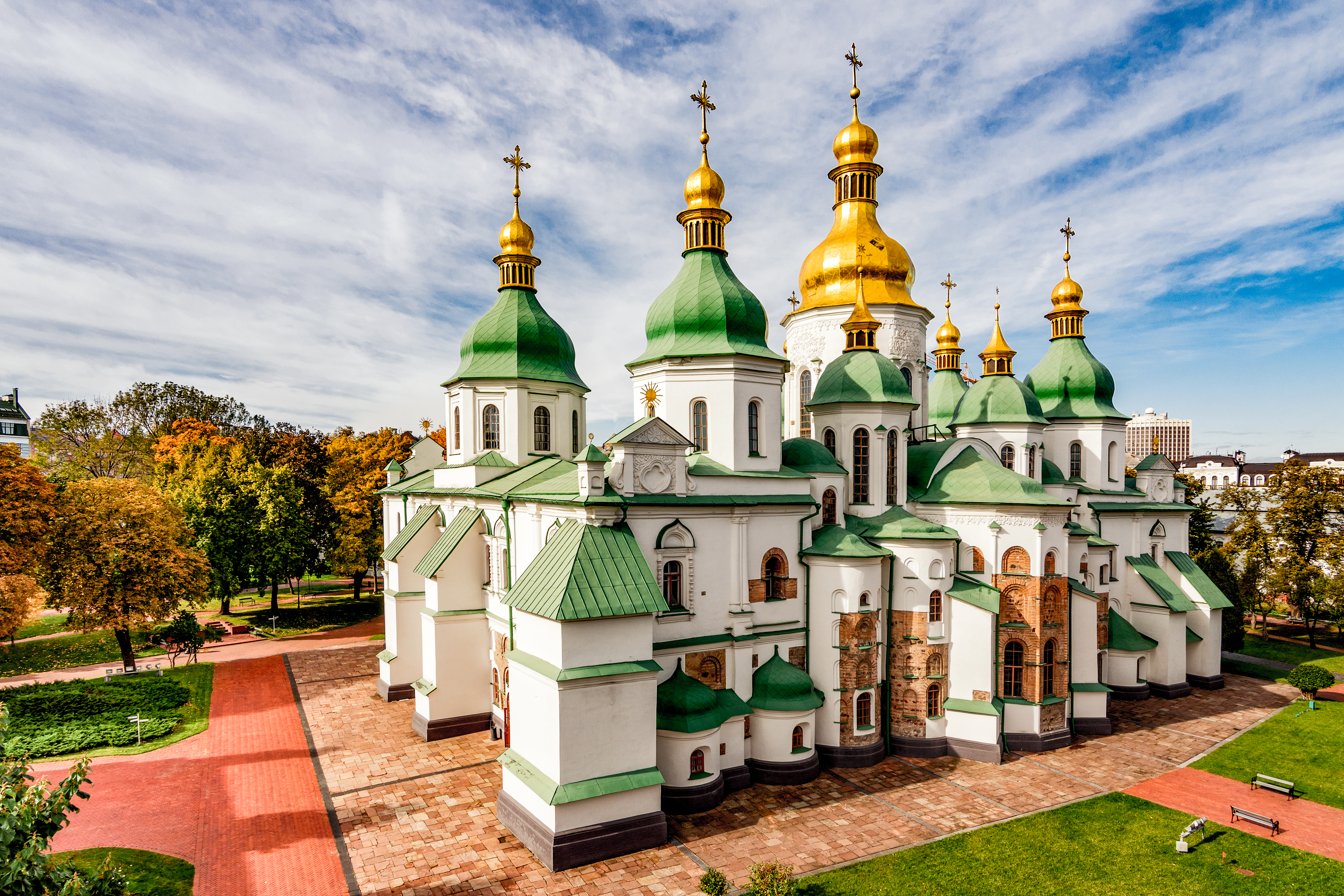
Bombing Culture: The Cultural Destruction of Ukraine?
Written by Frederik Rosén, Ph.D., Director Nordic Center for Cultural Heritage and Armed Conflict.
Putin targets civilians to tear up Ukrainian resistance, flash monolithic power and aggravate the international community. Along with soaring civilian casualties and destruction of urban space, culturally significant places, so-called ‘cultural heritage’, suffers increasing damage. Hence there is a need for considering how Putin may choose cultural destruction as a military strategy to undermine a nation and its people.
Ukraine is home to World Heritage Sites, historical towns, buildings and monuments, thousands of museums, and many holy sites that are often shared by the Russian and Ukrainian Orthodox Churches. Ukraine’s cultural heritage stands central to the preservation and development of Ukraine as nation.
So far, Russia has destroyed or damaged several historical buildings, museums, and churches. This includes the Dormition Cathedral in Kharkiv and the Babyn Yar Holocaust Memorial honoring the largest killing of Jewish people by Nazis during world War.
As Russia steps up attacks on civilian targets and infrastructure, and with the memory of Russia’s total destructions of Grozny in Chechnya (1999-2000) and Aleppo in Syria (2016) as our touchstone of expectation for what’s to come, concerns for Ukraine’s cultural heritage grow. If Putin’s aims to undermine Ukraine as a nation, he will maximize its cultural destruction.
Russian appropriation of Ukrainian cultural heritage in Crimea
Since the early days of the Annexation of Crimea, Russia has taken a proactive approach to cultural heritage. Immediately after the annexation, the new State Council of Crimea adopted the “Law on the Sites of the Crimean Cultural Heritage,” declaring Russian ownership over all museums and monuments of Crimea. Russia also inscribed more than 220 Ukrainian cultural sites on the Russian list of important Russian cultural heritage, including churches, mosques, and historical monuments and places.
In 2021, UNESCO reported that Russia’s appropriation of cultural heritage on the peninsula included 4,095 monuments under state protection and concluded that “Russia uses such appropriation to implement its comprehensive long-term strategy to strengthen its historical, cultural and religious dominance over the past, present and future of Crimea.”
The case of Crimea is not unique. Rather, UNESCO’s statement exemplifies how we have progressed from seeing conflict-related destruction of cultural heritage just as a cultural tragedy to understanding it also as a security issue. Cultural heritage increasingly stands central to territorial disputes and armed conflicts.
Examples come to mind from Bosnia, Croatia, Israel-Palestine, Cyprus, Afghanistan, Syria and Iraq, Mali, Nagorno-Karabakh, Yemen, Ethiopia, and Myanmar. And terrorists tend to select culturally significant targets, e.g., the World Trade Center, cultural venues, places of worship.
The destruction, misappropriation, or manipulation of culturally significant places serves as a tool of domination and confrontation. They often form part of a broader strategy of rewriting history. It’s about recasting the cultural and thus geopolitical dimension of disputed or conquered territory.
The strategic importance of culturally significant places is well understood in security circles. For example, the NATO Secretary General’s Annual Report 2020 highlights that, “The protection of cultural property and common heritage has been a core NATO value since its foundation in 1949. As an essential aspect of the security environment, cultural property and its protection can constitute a crucial element in strategic, operational, and tactical considerations.” The NATO Secretary General here refers to the North Atlantic Treaty, which states the determination of the Alliance to “safeguard the freedom, common heritage and civilization of their peoples.”
Evacuations and expectations
Enter Russia’s assault on Ukraine day 15. A hectic evacuation of cultural heritage continues at Ukrainian museums and churches. Artefacts and artworks are packed and stored in basements. The most valuable pieces stowed in bunkers. Statues are wrapped in protective coverings. Historical buildings, like the Odessa Opera and Ballet, are emptied from valuables and sandbagged. The concern is about bombs as much as looting if or when Russian troops enters the cities.
Ukrainian media and the international heritage community flood social media with their concerns to mobilize political attention. International museum organizations collect money to support evacuations. Destructions are documented as possible war crimes.
And then the waiting. Commentators expect Russia to strike Ukraine with increasingly ruthless and indiscriminate air power. There is a fear of the Russian tactic of “rubbleisation” as deployed in Afghanistan, Chechnya, and Syria. The aim is sheer destruction of urban space, to transform it into rubble. Everything is a target. In Chechnya, some 300 of the country’s 350 mosques were destroyed or heavily damaged.
Putin knows the power of cultural heritage
It remains to be seen if, or to what, extent Russia will circumnavigate Ukraine’s cultural heritage. Putin undoubtedly views it as a tricky dimension of his battle space. The Ukrainian Orthodox Church and the Russian Orthodox Church share many holy sites in Ukraine. And many museum collections straddle the cultural history of both nations. They hold Russian and Ukrainian art, artefacts from classical and Byzantine rule, and collections of Russian Orthodox Icons. A destruction of Ukrainian cultural heritage will unavoidably involve a loss for Russia.
In 2017, Russian forces contributed to the liberation of the ancient city of Palmyra in Syria, a World Heritage site, where ISIS had dynamited temples and structures. After, Putin flew in an entire symphonic orchestra to perform a liberation concert at Palmyra’s Amphitheater, in the middle of the conflict zone, presenting himself as the Great Savoir of World Heritage. Putin also nurtured strong ties to the former UNESCO Director General, Irina Bokova, and supported her international campaign to protect cultural heritage against the harms of war.
Will Putin order his commanders to avoid damage to cultural heritage? Will he shrug his shoulders, as he does with the civilian suffering? Or will he order a targeting of historical buildings, monuments, museums, and churches as a weapon of war?
The main point is that Putin knows about the military relevance of cultural heritage and how to play it. His approach to Ukrainian cultural heritage is intentional.